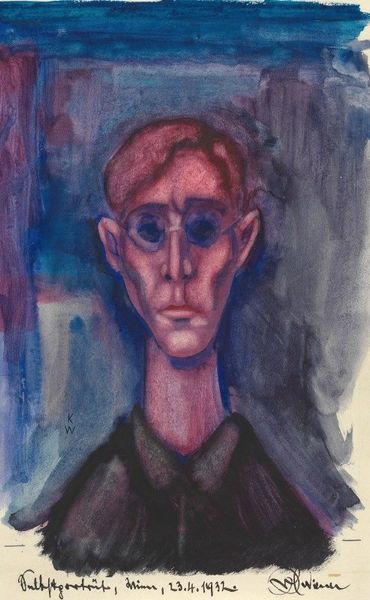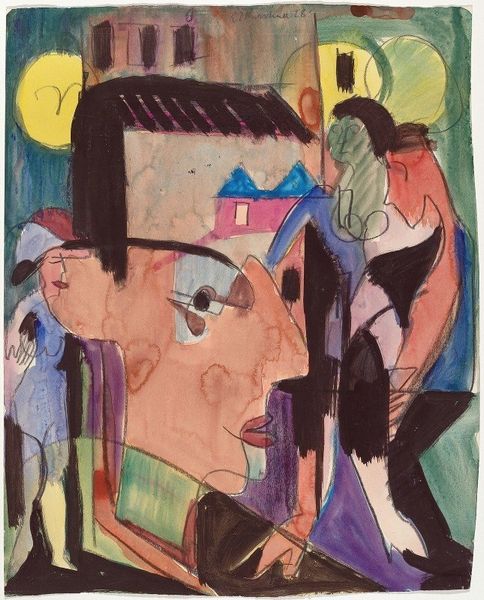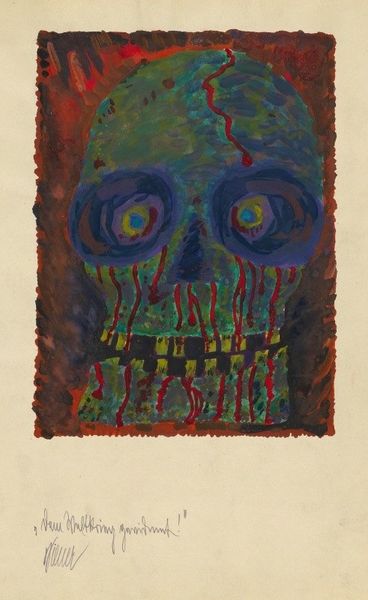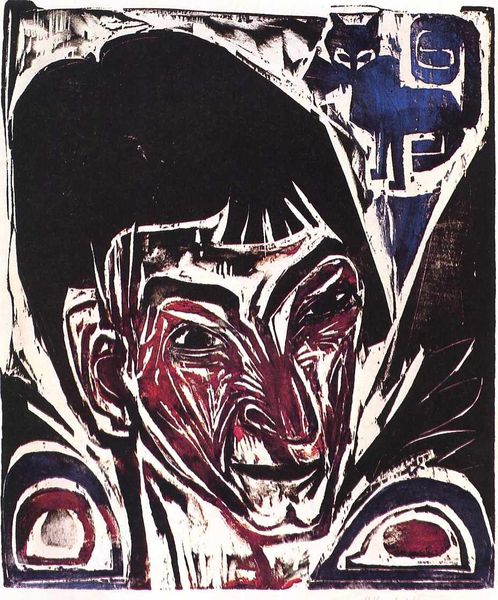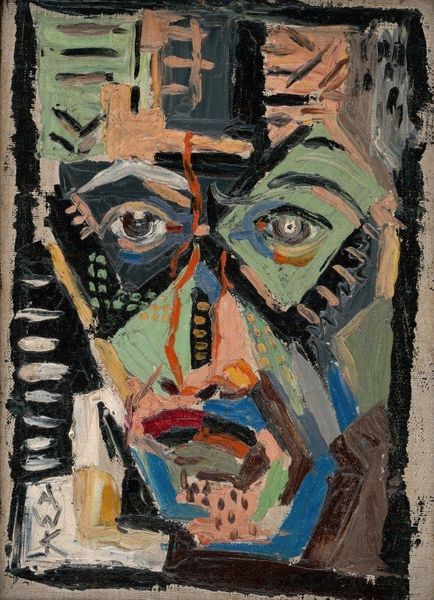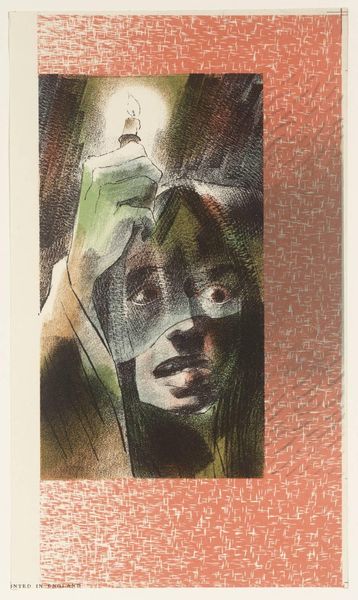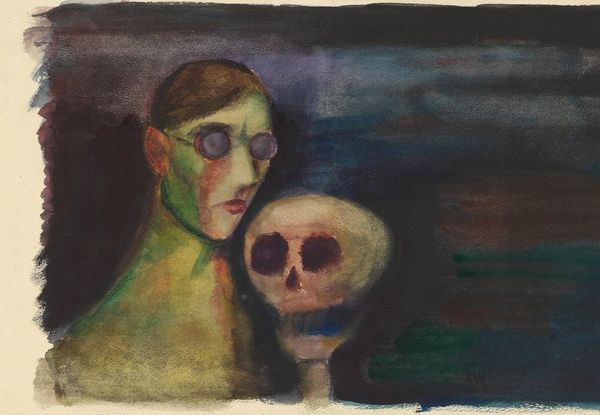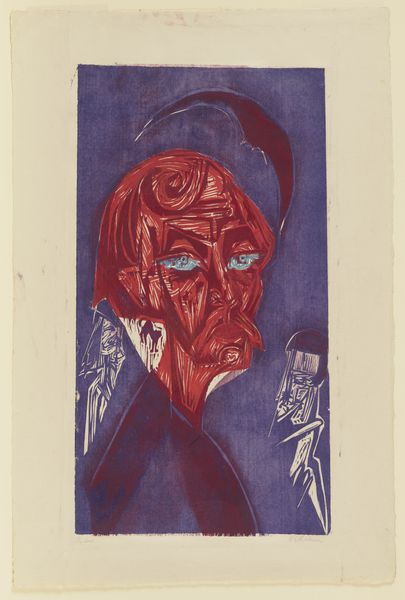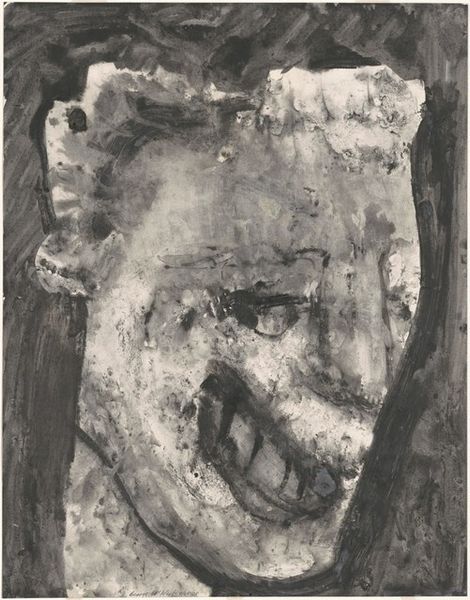
Copyright: Public Domain: Artvee
Curator: This is Karl Wiener's "Bedrängnis," created around 1923, using ink, watercolor, and colored pencil on paper. Its literal translation from German is distress. Immediately, I find myself drawn into the chaotic dreamscape. Editor: Yes, the texture created by the cross-hatching imbues a feeling of confinement. Note the flatness of the picture plane, emphasizing the stacked, claustrophobic space occupied by the figures and architectural elements. Curator: I see something of the Freudian uncanny in the layering of symbolic motifs. Wiener was known for a certain brand of fantasy-infused portraiture with a strong leaning toward Symbolism. So we can assume the images aren’t casual. I wonder what sort of anguish inspired this piece. Was he haunted by the political instability of the interwar period? Or could this relate to personal struggles? Editor: Interesting point! Consider also, however, the recurrence of geometric patterns. This isn't just unbridled expressionism; observe the formal arrangement and subtle colour harmonies to decode any emotional narrative within the aesthetic experience. The skull is placed just above those... are those gabled roofs? Notice the angles they create and how the figures above them almost mirror this sharpness. Curator: True, that is difficult to ignore. There’s also a recurring gaze found within the different subjects—the man’s, but also the cats, the owl... It's as though Wiener’s interrogating the act of observation itself; suggesting that power dynamics might manifest through this act. This makes the work all the more confrontational. Editor: Definitely an assertive compositional device. The artist deliberately commands your vision through strategic placement, ensuring no detail escapes notice. Look closely and one can even see what looks like the artist has drawn in individual hairs in coloured pencil, on that central figure. Curator: The material contrasts and repetitive visual language makes this such an open piece for modern viewers, particularly when interpreted through modern critical lenses that acknowledge the fluidity of identity, representation, and trauma. I really enjoy the fact that while disorienting, it draws you in closer to seek greater meaning. Editor: Indeed. Wiener uses deceptively simple means to weave an artwork of intense complexity. One has much to ponder here about formal structures, representation, and perhaps, how art itself reflects distress.
Comments
No comments
Be the first to comment and join the conversation on the ultimate creative platform.
